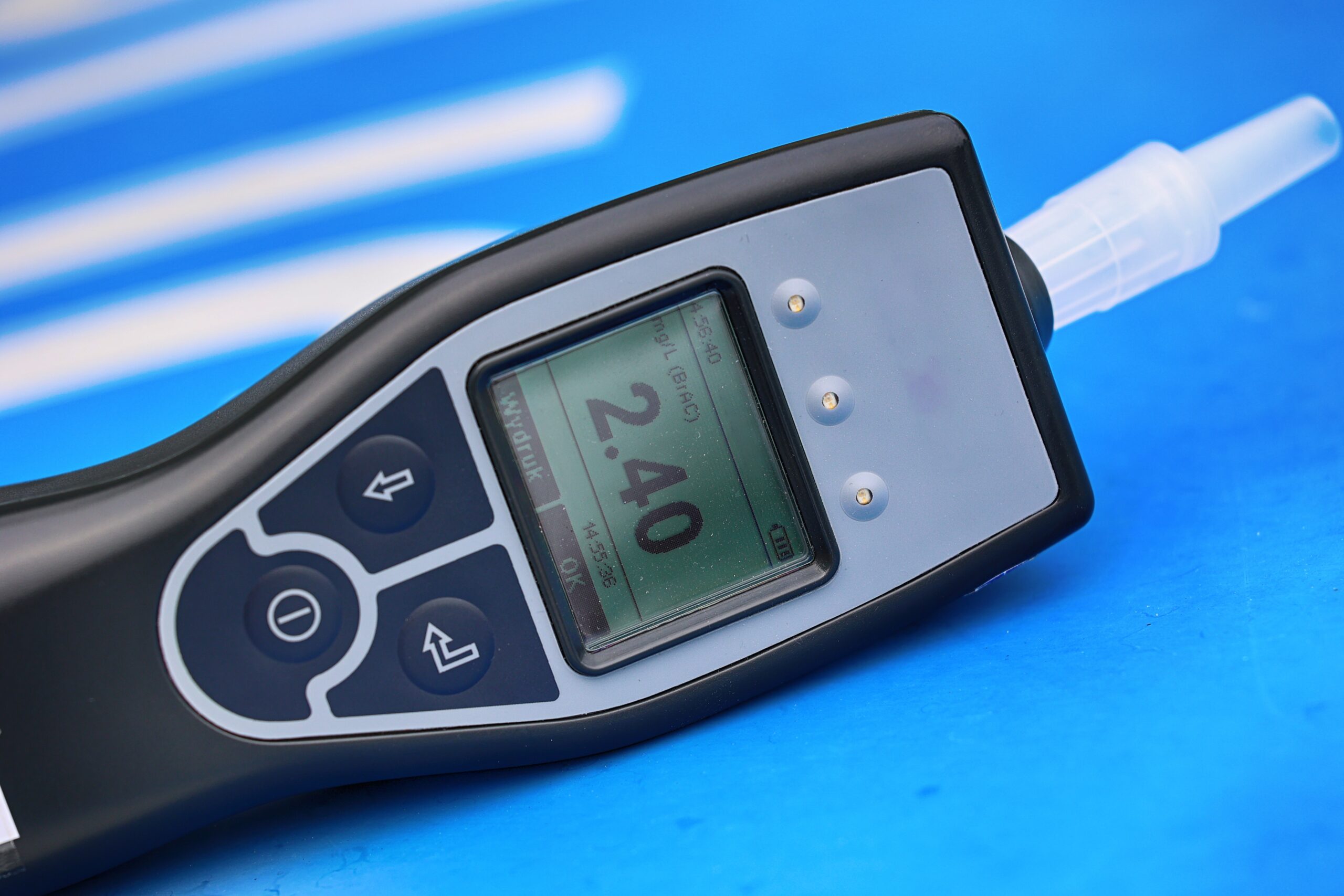Challenging calibration certificates for breathalyzer devices in Australian courts
Breathalyzer devices are an essential tool used by law enforcement in Australia to measure a driver’s Blood Alcohol Concentration (BAC) levels during roadside tests. These devices provide a quick way to assess whether a driver is sober or not, helping to enforce strict road safety measures. It’s crucial that these BAC measurements are precise, as they play a vital role in ensuring public safety and protecting individual rights.
The laws governing breath tests in Australia are very detailed, with Section 47K of the Road Traffic Act 1961 (SA) being the main regulation. This section outlines the procedures and standards that breath tests must follow in order to be accepted as valid evidence in court. One of the key requirements is having accurate calibration certificates for the breathalyzers, which prove that the results are reliable.
Accurate calibration is important because it ensures that breathalyzers give trustworthy readings. This is essential for maintaining fairness in legal proceedings. When these calibration certificates are questioned in Australian courts, it highlights the connection between technology and the law—an area where careful legal understanding is crucial.
If a driver’s BAC levels show that they have consumed alcohol beyond the legal limit, they may face serious consequences such as dangerous driving charges under the Road Safety Act 1986 or the Crimes Act 1958. These offences indicate a severe violation of road safety rules and can result in significant penalties. On the other hand, if a driver is found to be under the influence but can prove that they did not intend to cause harm, they may instead be charged with careless driving. This difference further highlights why accurate BAC readings are so important in determining the type of driving offences committed.
Understanding Breathalyzer Devices
Breathalyzers are important tools used to measure a person’s blood alcohol concentration (BAC) by analyzing a sample of their breath. These devices work on the principle that alcohol in the bloodstream is exhaled through the lungs, allowing for an estimation of BAC through breath analysis. There are mainly two types of breathalyzers used: fuel cell-based devices and infrared spectroscopic devices, each with its own method of detecting alcohol levels.
Types of Breathalyzers
- Fuel Cell-Based Devices: These breathalyzers use a chemical reaction involving alcohol to generate an electrical current, which is then measured to determine the BAC.
- Infrared Spectroscopic Devices: These devices utilize infrared light to analyze the breath sample and identify the presence of alcohol based on its unique absorption characteristics.
Legal BAC Limits in Australia
In Australia, legal BAC limits are strictly enforced to ensure road safety. The standard BAC limit for fully licensed drivers is set at 0.05%. However, stricter limits apply for learner drivers, provisional license holders, and commercial vehicle operators who must maintain a BAC of 0.00%. Breaching these limits often results in penalties ranging from fines to license suspensions.
Role of Breathalyzers in Law Enforcement
Breathalyzers play a crucial role in law enforcement, especially during random breath tests conducted by police officers to discourage and identify impaired driving. The accuracy of these devices is extremely important; even slight inaccuracies can lead to unfair legal consequences. Therefore, regular calibration of breathalyzer devices is vital to ensure their dependability and exactness.
Accurate calibration guarantees that legal proceedings based on BAC readings can withstand examination, preserving the integrity of traffic law enforcement in Australia.
The Calibration Process: Ensuring Accuracy in Breathalyzer Devices
Ensuring the accuracy of breathalyzer devices is crucial for reliable blood alcohol concentration (BAC) measurements. Regular calibration of these devices is essential to ensure that they provide dependable results, a necessity emphasized by the Road Traffic Act 1961 (SA). The calibration process is not just a technical requirement but also a legal obligation that can significantly impact court proceedings involving alleged drink-driving offenses.
Why Calibration Matters
Breathalyzers must be calibrated routinely to maintain their accuracy. Typically, this involves a comparison against known standards and adjustments as needed. While manufacturers might recommend specific intervals for calibration, it’s generally accepted that devices should be checked at least every six months to ensure optimal performance. Factors such as environmental conditions, frequency of use, and storage can all affect the calibration results; thus, adherence to these intervals is crucial.
Legal Requirements for Breathalyzer Calibration
Section 47K of the Road Traffic Act 1961 (SA) outlines the legal framework governing the use and maintenance of breathalyzer devices. This section mandates that only properly calibrated and certified devices are used for evidential purposes in court. A valid calibration certificate serves as proof that the device has been tested and found accurate within the prescribed limits. Without this certification, any BAC readings from these devices could be deemed inadmissible in legal proceedings.
The significance of valid calibration certificates cannot be overstated. When challenging breathalyzer results in court, discrepancies in calibration records or expired certificates can form the basis for defense strategies. Defendants may argue that inaccuracies due to improper calibration could have resulted in erroneous BAC readings, potentially influencing case outcomes. Thus, ensuring adherence to legal requirements regarding calibration is both a procedural safeguard and a critical element in upholding justice within traffic law enforcement.
Evolving Legal Landscape
However, it’s important to note that the legal landscape surrounding driving laws is evolving. For instance, recent updates on medicinal cannabis and driving laws in Victoria have introduced new considerations such as THC testing and prescription requirements. These changes highlight the need for ongoing education and adaptation within the realm of traffic law enforcement and legal proceedings related to driving under the influence.
Challenging Breathalyzer Results: Legal Strategies and Considerations
When it comes to contesting breathalyzer results, there are several legal strategies that can be used. It’s important to understand the specific conditions under which these results can be challenged in order to build a strong defense.
Calibration Certificates
One major area of dispute involves calibration certificates. If a breathalyzer device doesn’t have a valid calibration certificate or if there’s any discrepancies in the certificate, it gives us a reason to question the accuracy of the device in court.
The importance of calibration certificates cannot be overstated when it comes to establishing the reliability of breathalyzer readings. In Australian courts, challenging these certificates can create reasonable doubt about an individual’s Blood Alcohol Concentration (BAC) level at the time of testing, which could potentially affect the outcome of a case.
Blood Tests
Another key strategy is to request a blood test as a backup form of evidence. Unlike breath tests, blood tests are generally considered more accurate and less influenced by external factors that may distort results. To obtain a blood test, defendants usually need to act quickly and ask for this alternative test soon after their initial arrest or charge.
Benefits of Blood Tests
Here are some advantages of having a blood test:
- It provides an additional layer of verifiable evidence.
- It can highlight discrepancies with breathalyzer results.
- It often serves as an important element in building a strong defense case.
The Role of Legal Counsel
It’s crucial to involve legal counsel who has experience in challenging calibration certificates for breathalyzer devices in Australian courts. These legal experts know how to navigate through these complexities and make sure that every possible angle is considered.
They will carefully examine how evidence is presented and advocate for alternative testing methods such as blood tests. This comprehensive approach increases the chances of achieving favorable outcomes for clients facing BAC-related charges.
Importance of Comprehensive Legal Strategies
However, we must not forget that driving under the influence of drugs also has serious consequences, especially in places like Victoria where there are strict penalties including mandatory licence loss for drug driving offenses. This emphasizes the need for comprehensive legal strategies not only for alcohol-related offenses but also for drug-related driving charges.
Personal Factors and Their Impact on BAC Readings
Understanding Blood Alcohol Concentration (BAC) readings goes beyond just knowing the numbers. It involves looking at individual characteristics that can influence these results.
1. Gender Differences in Alcohol Metabolism
Gender plays a significant role in how alcohol is processed by the body. Men and women metabolize alcohol differently due to biological differences. This means that breathalyzer readings may not always accurately reflect a person’s level of intoxication based solely on their alcohol consumption.
- Women typically have a higher body fat percentage and lower water content compared to men.
- As a result, women may experience potentially higher BAC levels than men after consuming the same amount of alcohol.
2. The Impact of Age on BAC Levels
Age is another critical factor in determining BAC levels. As individuals get older, their metabolic rates change, which affects how quickly alcohol is processed by the body.
- Older adults may experience slower metabolism, resulting in prolonged elevated BAC levels compared to younger individuals.
- This means that even if an older person consumes the same amount of alcohol as a younger person, their BAC levels may remain elevated for a longer period of time.
3. Liver Health and Its Influence on Alcohol Processing
The condition of one’s liver health cannot be overlooked when it comes to understanding BAC readings. The liver plays a crucial role in metabolizing alcohol, and any impairment in liver function can lead to inaccurate results.
- Conditions such as liver disease or compromised liver function can significantly alter how alcohol is processed in the body.
- This can result in discrepancies between actual intoxication levels and those indicated by breathalyzers.
4. Implications for Legal Professionals
These personal factors highlight the complexity involved in interpreting breathalyzer results. They emphasize the importance for legal professionals to consider individual characteristics when challenging BAC readings in court.
This approach ensures that justice takes into account personal physiological differences when determining legal culpability related to driving under the influence.
5. DUI Offenses in Victoria
In Victoria, it is important to note that driving under the influence of drugs, commonly referred to as a DUI, is also a serious offense. This further emphasizes the need for accurate understanding and interpretation of BAC readings and other related factors when addressing legal matters concerning intoxicated driving.
Navigating the Legal Framework: Court Procedures and Expert Testimony
Understanding the complexities of legal proceedings involving breathalyzer results requires the expertise of experienced legal counsel. When challenging breath test results, having a lawyer is essential. An experienced attorney not only knows the details of the law but also has the strategic skills needed to build a strong defense.
The Role of Legal Representation in Court Procedures
Court procedures in these cases usually start with a pre-trial meeting where evidence is reviewed, and arguments are prepared. Having a lawyer is crucial in carefully examining every detail, especially looking at potential issues with calibration certificates. Any problem here can greatly affect the outcome of the case.
The Importance of Expert Testimony in Trials
As trials move forward, expert testimony often becomes a key factor. Experts can explain complex technical aspects of breathalyzer devices, how they work, and factors that influence their accuracy. Their insights usually challenge or support the validity of results presented by the prosecution.
In addition to expert witnesses, having an attorney skilled in these matters ensures that every procedural protection is used effectively. This includes filing appropriate motions to exclude potentially unreliable evidence and cross-examining prosecution witnesses to uncover inconsistencies.
Understanding Discretionary Licence Loss Implications
However, if you find yourself facing a discretionary licence loss for driving whilst suspended in Victoria due to these legal challenges, understanding the discretionary licence loss implications is crucial. This guide provides valuable insights into penalties, court considerations, and strategies to minimize consequences.
Why Choosing Experienced Practitioners Matters
Navigating these legal issues requires accuracy and knowledge that only experienced professionals can offer. At Elbob & Stephenson Legal, we are dedicated to providing excellent service and strategies tailored to our clients’ needs. Our team’s commitment is evident in our many success stories where careful legal plans have made a real difference in court outcomes.
It’s important to work with professionals who prioritize your rights and future security when dealing with legal matters.
Having experienced representation during critical moments can make a significant difference. Take charge of your future by consulting with legal experts who have a proven track record in these cases—ensuring that your rights are protected and navigating through legal complexities with skill.
Need to speak with a lawyer?
Our experienced lawyers are here to help you understand your legal rights and options. Contact us for a confidential discussion about your situation.


















